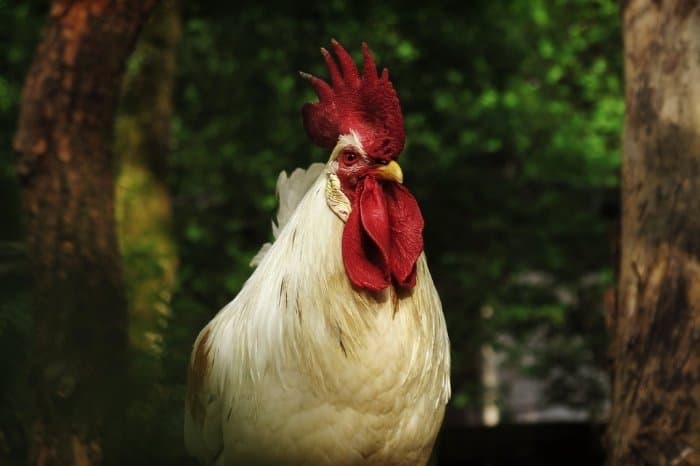Last Updated on February 27, 2023 by Griselda M.
What can we learn from bird behavior before a storm? Why do birds fly around before a storm? How do birds act before a tornado? Storms and extreme weather events are becoming way more regular, and sometimes, understanding bird behavior can help you make quick plants that can save your life. Read on to learn how our clever fluffy friends adapt to extreme weather events.
Does Bird Behavior Before a Storm Change?
Storms, and very intense weather events – Extreme Weather Events – are becoming more common. Birds are particularly at threat from extreme weather events and have developed several useful methods to detect and avoid such events. There are more than 10 000 known species of birds out there, and the methods an ostrich and a swallow will use to survive a storm are quite different. In this article, we will have a look at a few of the more noticeable things that different types of birds do.
There is a big difference for instance, in the type of bird behavior that comes before a weather system that can cause tornados and a winter ice storm. Birds know that both of these are bad things, but the way they avoid, or prepare for them is quite different.
In a way, birds act as an early warning system for us. In the case of tornadoes, our weather prediction can tell us that there is a big risk of tornados, but, the birds will help us see exactly where this risk is greatest. Watching the birds can save your life.
How Do Birds Act Before a Storm?
Birds are good at sensing an oncoming storm. According to a nationalgeographic.com report, warblers in Tennessee left their breeding grounds a few days before the arrival of severe thunderstorms.
Birds can hear low-frequency sounds called infrasound that precedes a storm’s arrival. Even your pet bird has this same capacity to some degree and can show behavioral changes which predict an impending severe weather event.

Birds can sense barometric pressure, as reported by some scientists. Experiments carried out revealed that birds change their normal pattern of preening at dawn and immediately start feeding a lot if the barometric pressure indicated a storm was approaching.
What is Your Pet Birds Behavior When a Storm is Approaching?
Your pet bird is caged and cannot move to a new location to avoid a storm! You must therefore find a way to help it get through the event.
Some birds may become very aggressive and change their feeding habits as a large storm approaches. Others may become sensitive to loud noises or become afraid or upset during thunderstorms. If you notice these symptoms, you can help them remain calm even as the weather changes.
One of the biggest issues related to severe weather is power outages, which largely affect your pet bird and yourself. Loss of air- conditioning, lights, or heat can occur after a serious storm, and your pet birds cannot handle this well. You will need to develop a plan to keep your house warm and well-lit when the storms approach.
Why Do Birds Fly Around Before a Storm and Other Telltale Behaviours
There are many behavioral changes that birders can notice when the weather is about to change. Let’s take a look at some of the common bird behavior before a storm.
Birds Choice PMSR12 Bird House, 12 Room, Silver

Perching on power lines
Resting on power lines is an everyday occurrence for many birds. Often just before a major change in weather, I remember as a kid we would see swallows would line up on telephone lines. Before storms, sudden changes in pressure often cause mass emergencies of aquatic invertebrates, such as mayflies, and the swallows would take to the sky in huge clouds eating these tasty insects and then resting on the powerlines.
Shortly after that, the thunderstorms would come.
How do birds act before a tornado? Sudden, unusual migration
Golden-Winged Warblers (Vermivora chrysoptera) are small migratory songbirds that overwinter in Central America and northern South America. These little birds then conduct a grueling migration to the Great Lakes/Appalachian region where they breed. These researchers were tracking these birds with little radio collars and saw how they abandoned their nests a few days before a major tornado storm system that decimated where they had been nesting. They migrated a huge distance to the Gulf of Mexico to find safety and returned after the storm had occurred, to continue with their lives.
With time, I am sure we will find more and more of these occurrences, but the sudden departure of birds from areas they are normally common in can indicate impending doom.
Seagulls coming in from the coast…
Sailors have reported all sorts of peculiar bird behaviors linked with weather changes. One of the most common observations shared is that coastal birds, like seagulls, come ashore before strong weather hits. This smart survival technique allows these birds to dodge dangerous weather while out on the water.
Spooky silence
If you have ever stood outside just before a storm, you might have noticed that it’s all quiet with no birds singing or flying around.
Birds tend to stop chirping and singing when they sense dangerous weather coming. This results in spooky silence that’s enough to make any birder abandon ship and head indoors.
Birds have an intrinsic ability to sense the weather, sometimes even better than meteorological forecasts!
Birds Associated With Storms
Some birds are more visible in their behavioral changes before a storm than others. We will call them weather birds. Let’s see the bird’s behavior that is associated with a storm
- Birds in flight flying high in the sky usually indicate fair weather
- They stop flying and take refuge at the coast if a storm is coming.
- They also fly low to avoid the discomfort of dropping air pressure.
- Birds can get hushed before a big storm.
- Their singing depicts fair weather approaching, and they are happy about it.
What Does It Mean When Birds Are Chirping Like Crazy?
Birds have their normal behavior. There are so many different types of birds, and they all have their specific normal behavior. When you suddenly notice something unusual, and they start doing something weird, then you know there is something up.
When I was a kid, there were large farming operations that fed their animals feed. This created a huge population of starlings that went and got fat on the feed scraps. These used to fly into town and roost in a tree near my parent’s house. They would fly in each evening in a murmuration. One day, they came in early, and shortly after that, there was a huge thunderstorm with hail. Many birds were killed, but the ones sheltered in their tree were a bit safer.
Different birds will chirp for different reasons – sometimes it can also be an alarm call for a snake that is in the trees – I have had this at my house where there was a terrible commotion outside and a lot of chirping. I went and had a look and sure enough, there was a huge snake in the tree outside.
Different Birds and Their Behavior Before a Weather Change
- Hawks. When they fly high, it means the sky is clear. When they fly low, they are telling you to prepare for a blow.
- Geese. They fly higher in fair weather than in poor weather.
- Seagulls. These birds fly inland when a storm is on the way.
- Fowls. They roost in the daytime when expecting rain. They could also get more noisy than usual and pick up small stones and pebbles if they are outside. Roosters unusually clap their wings, and hens rub in the dust and seem uneasy when the rain is approaching.

- Petrels. They gather under the stern of a ship meaning bad weather is approaching.
- Crows. A crow flying alone is a sign of foul weather. Crows flying in pairs is a sign of fine weather. Crows flying south depict severe winter as coming. If they fly north, then it means the winter will be light.
- Owls. Barred owls calling into the late fall is a signal of a rough winter.
Do Birds Circle in the Sky Before a Storm?
When birds circle in a big coordinated body it is called a murmuration. Birds such as starlings are well known to perform murmurations in response to stresses, and they definitely will do this if there is a storm approaching. I have seen this.
Various types of birds will circle in the sky before a storm, and this is why we talk to old people in our area. They will tell you about the “storm in ’64” when everything went quiet and the “XYZ” birds suddenly flew in the sky, and then the tornado hit and took the “Simmons” barn clean out of the ground. And those darn birds are new!! Old Timer Knowledge saves lives – take time to absorb it by chatting to these wise folks before they take the knowledge to the grave with them.
Conclusion
It appears that birds have pressure-sensitive organs in their ears. They can detect low pressure associated with a coming storm and any other weather changes. Birds always settle down and allow the bad weather to pass to save their lives. It also appears, based on scientific studies that they can in some cases detect infrasound – deep low-level sound.
FAQs
Why do birds act weird before a storm?
It's called pre-storm ritual. Birds know when it's going to storm and they prepare for it. They go into an 'arrested' state of heightened alertness and begin to behave in strange ways, sometimes even moving around and sitting in places that aren't usually used.
It's a preparation for when the weather does change. "The whole thing about it is, the birds have been doing this for years and years," he said. "They do it in the summer, but they do it now because they know the storm is coming.
What do birds do when they sense a storm?
They don't sit and wait for the storm to pass. Rather, they find shelter in trees, shrubs or buildings. They fly out of the way of falling debris, and they take refuge in buildings if they are too close to the path of the storm. They can sense when a storm is coming, and they can sense whether it will be a big one or a small one.
They head for the nearest tree. This is not just any tree, though: it's a species-specific tree that has been selected over millions of years by evolution for its ability to withstand wind, rain and snow. "Birds are smart. They're very aware of what is going on around them," says David Cuthill, an ornithologist at the University of California, Los Angeles (UCLA).
He points out that most birds have some kind of feathery warning system—a visual one for some, and an auditory one for others. But, he adds, "if you are a bird that is flying through the forest and you hear a large tree fall down in front of you, you don't have much time to think about what it might mean." It means you need to take off quickly, because that falling tree could be the last tree you ever see.
Birds can also sense changes in the wind. When the wind changes direction, it blows away the smell of predators. Birds can use this information to decide where they should go. Birds have their own language, and they communicate with each other by calling out, singing songs, and using gestures.
What does it mean when birds chirp during a storm?
It is a sign of impending bad weather. There is a theory that this happens because the sound is more easily heard in the air than on the ground due to wind and the noise is picked up by the bird's ear. So, the bird knows there will be a storm and they know to look for shelter. The bird will do this all over the world. It is not just seagulls but other species of birds. This is called kleptoparasitism or kleptochrony.
Are birds more active after rain?
Rain is a very important part of the natural cycle. Rain is what makes the air humid and helps create clouds. The rain also brings in nutrients to plants and soil, which creates a more favorable environment for living creatures to thrive. Rain can also flush out toxins from the air we breathe.
A study by the US Geological Survey shows that birds are more active on days with rainfall. The birds were observed by a team of researchers, and they found that birds were more active on rainy days than on dry days. It is thought that this could be because the rain brings in nutrients into the air and so the birds can feed more easily.
Caroline is a gardener who loves to get down to the nitty–gritty of gardening. She proudly proclaims herself as a ‘dirt worshipper‘ and can often be found deep in the garden, covered in soil and singing to her plants. As a self–proclaimed ‘plant whisperer‘, Caroline believes that plants need love and attention just like any other living thing, and she loves to give them both. When she‘s not tending to her garden, you can often find her researching the latest gardening trends, or teaching others how to make their gardens thrive

